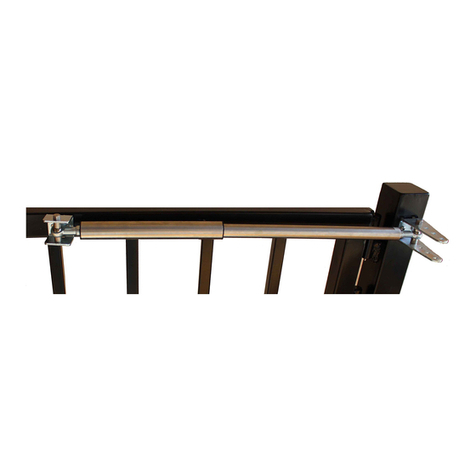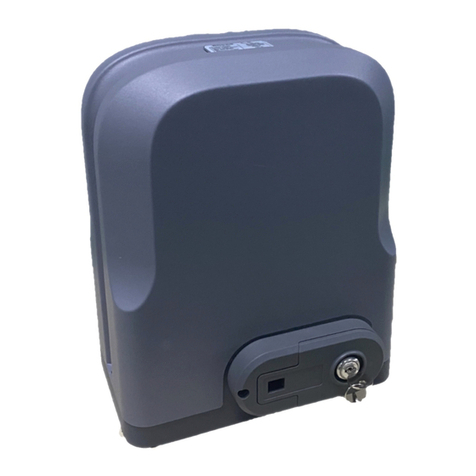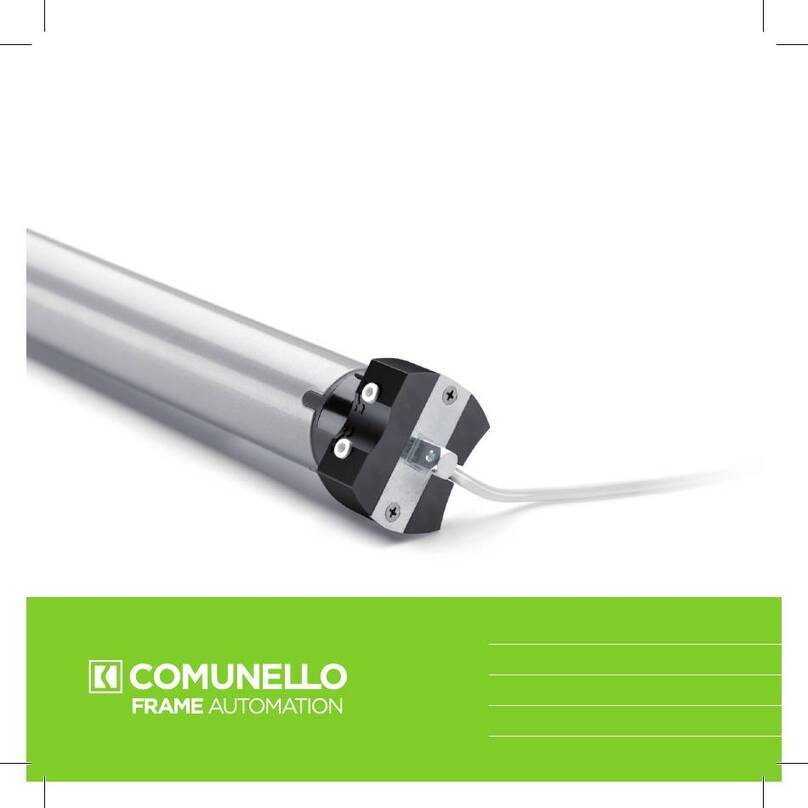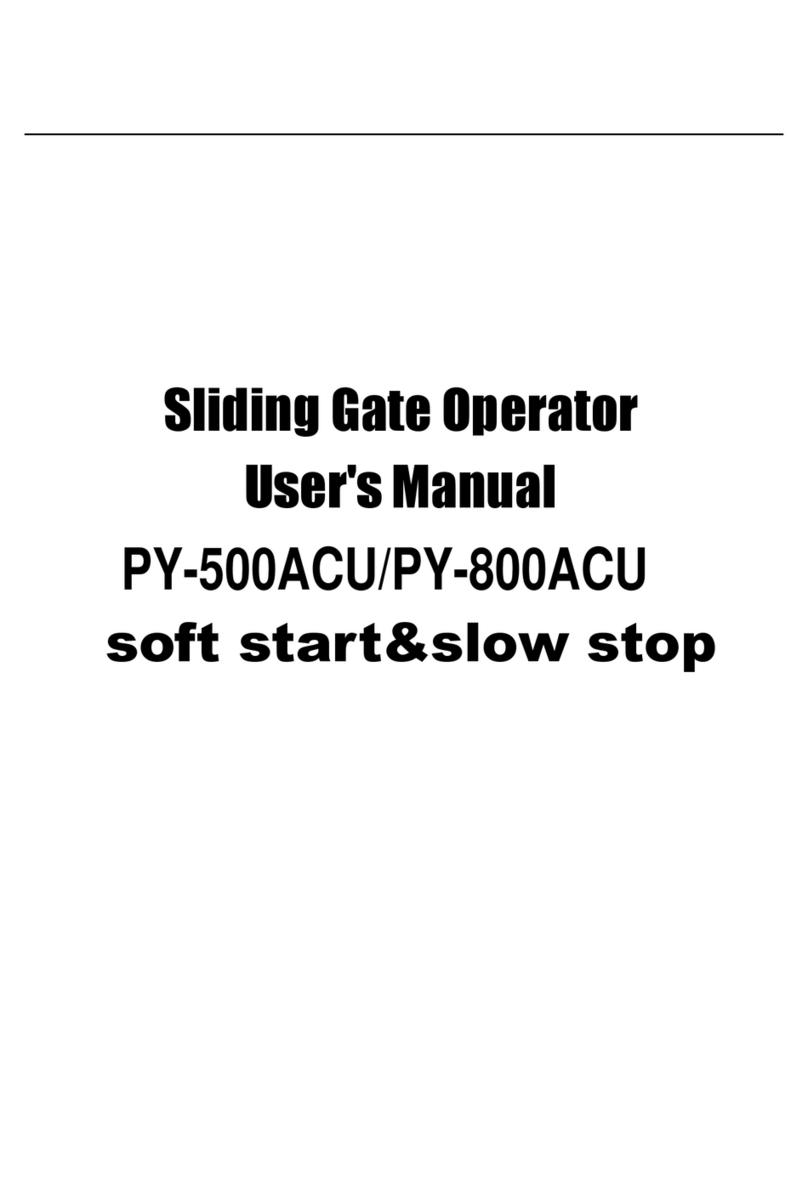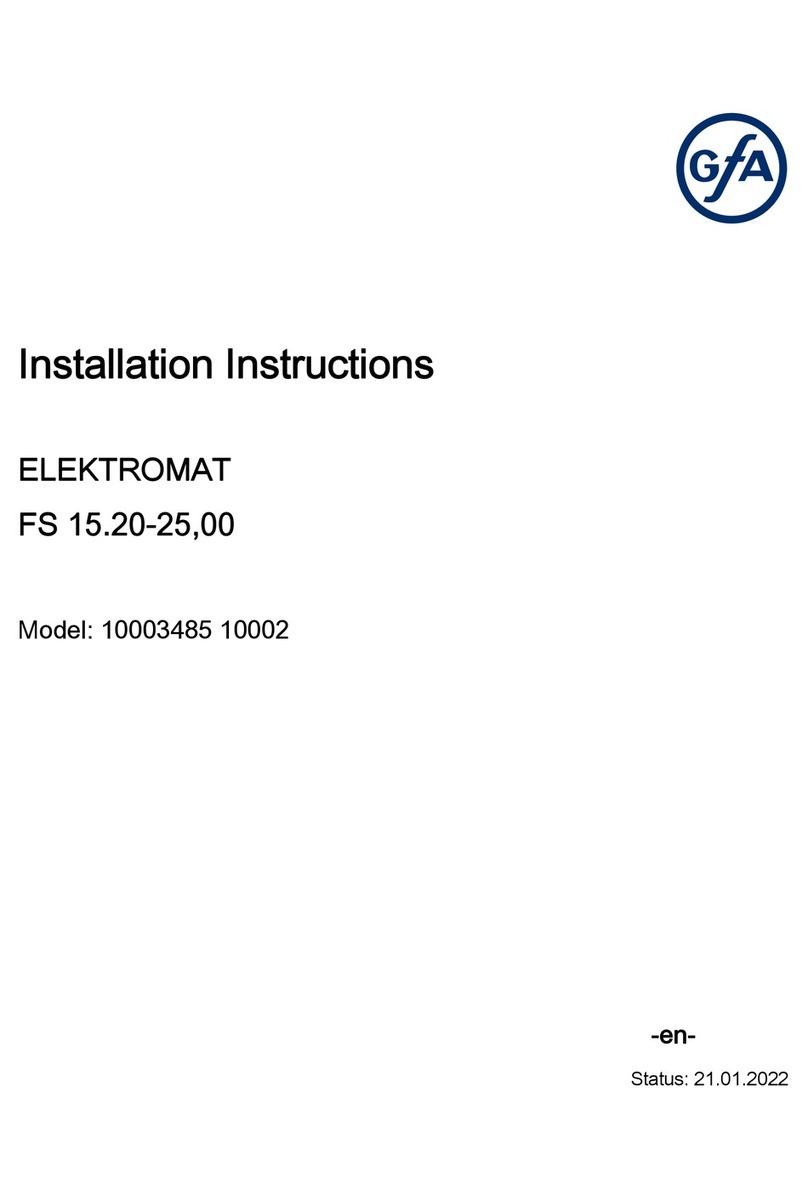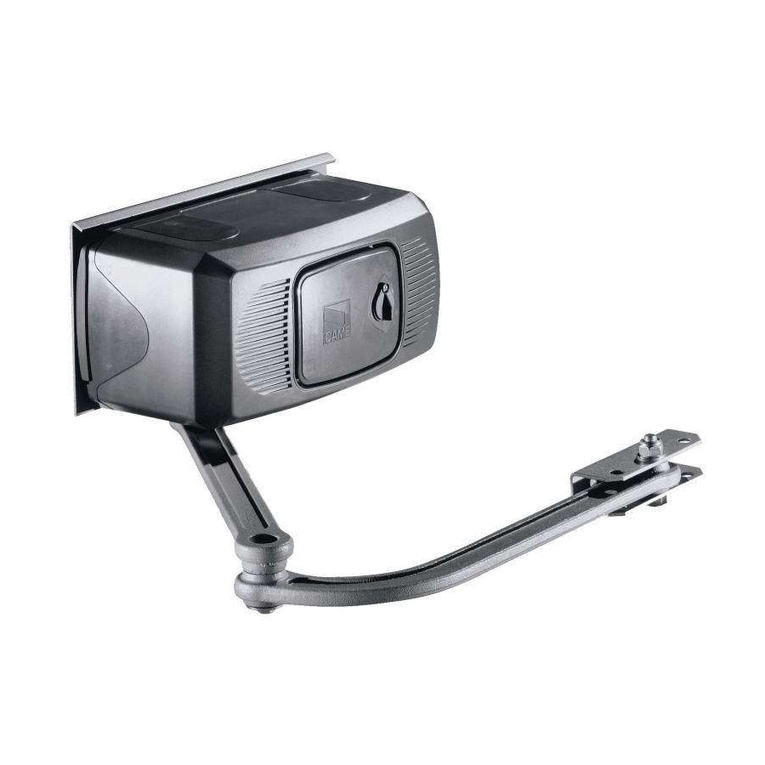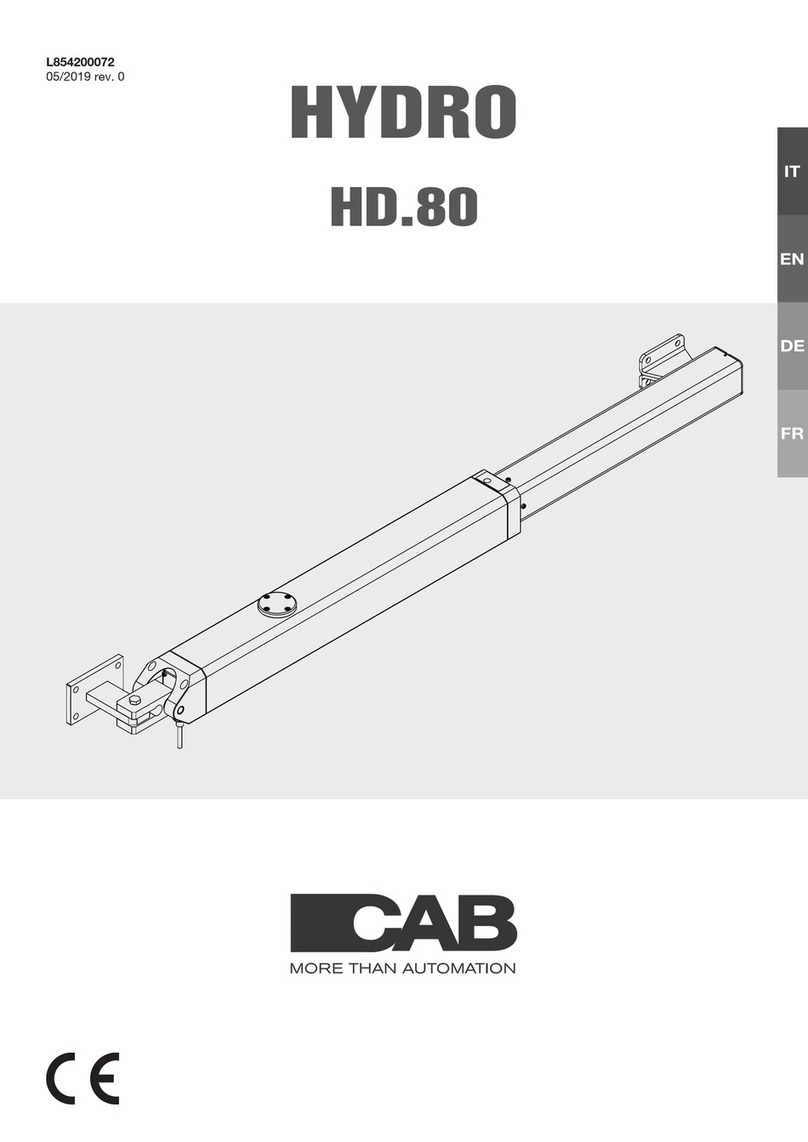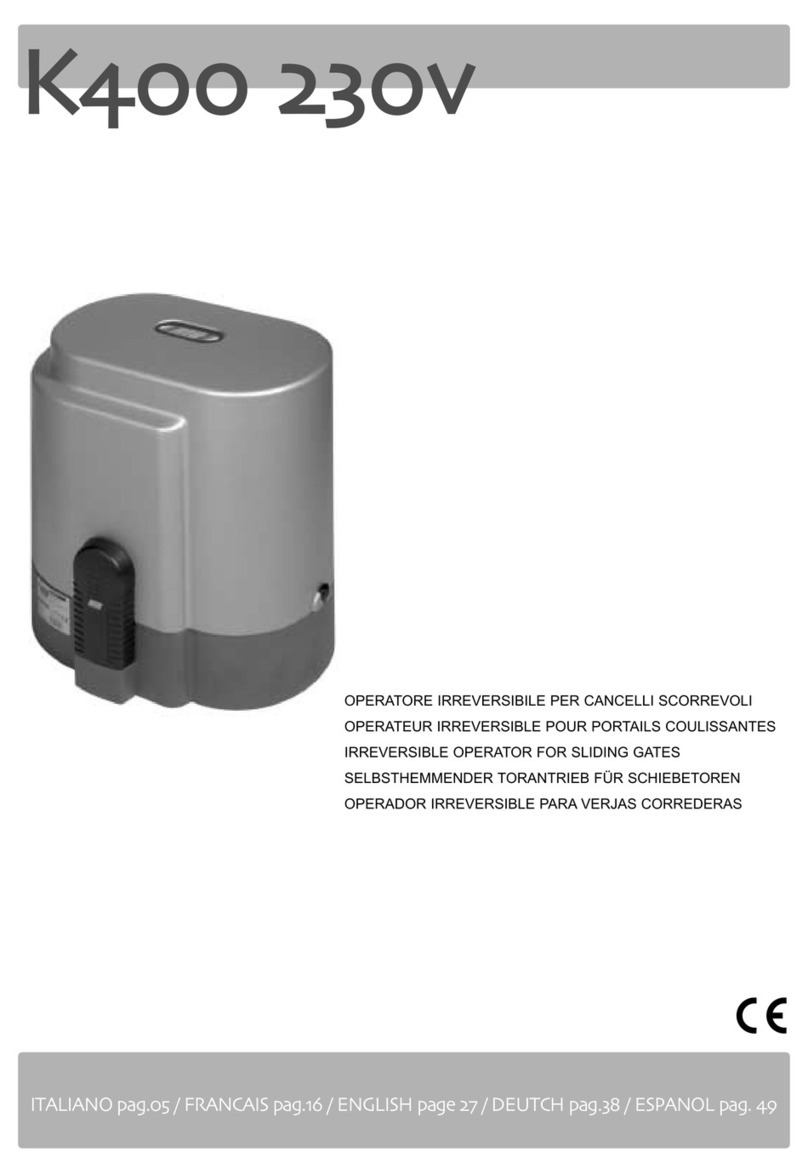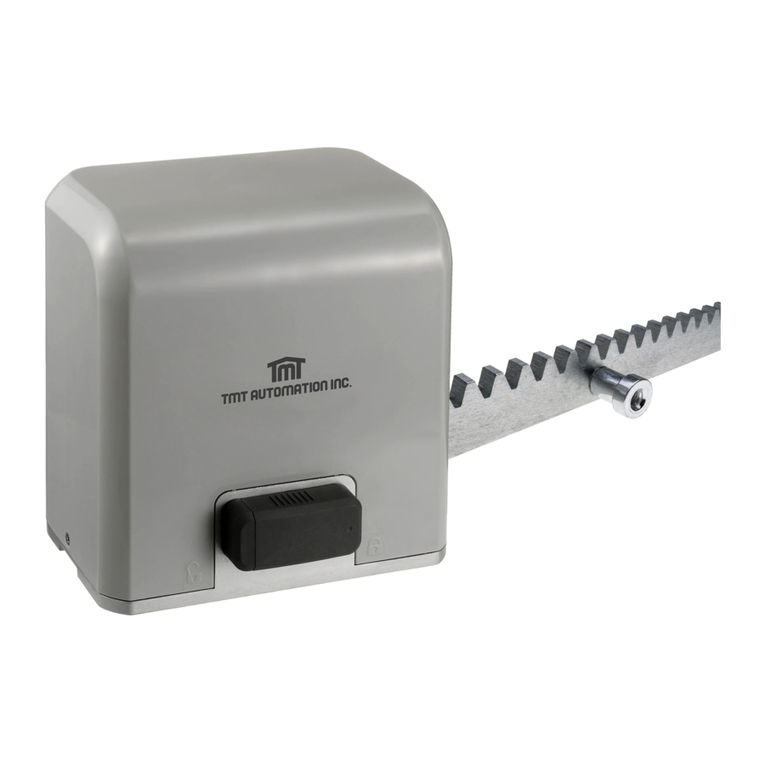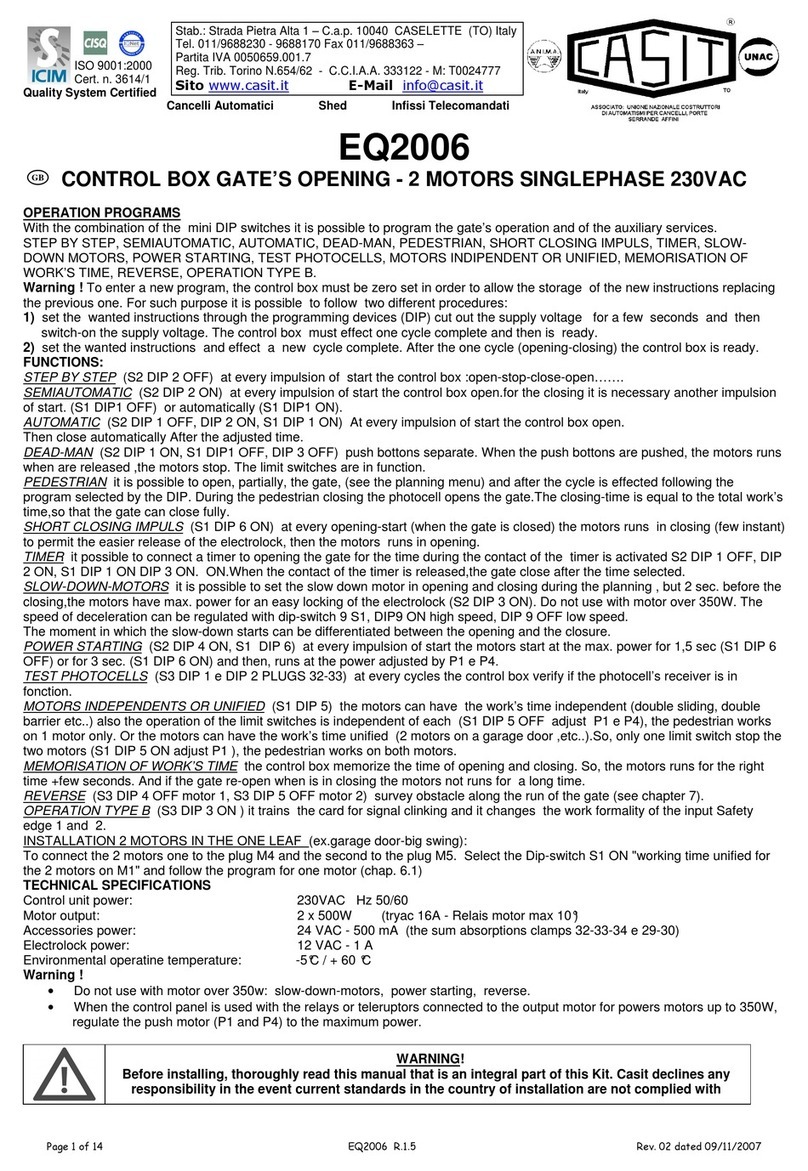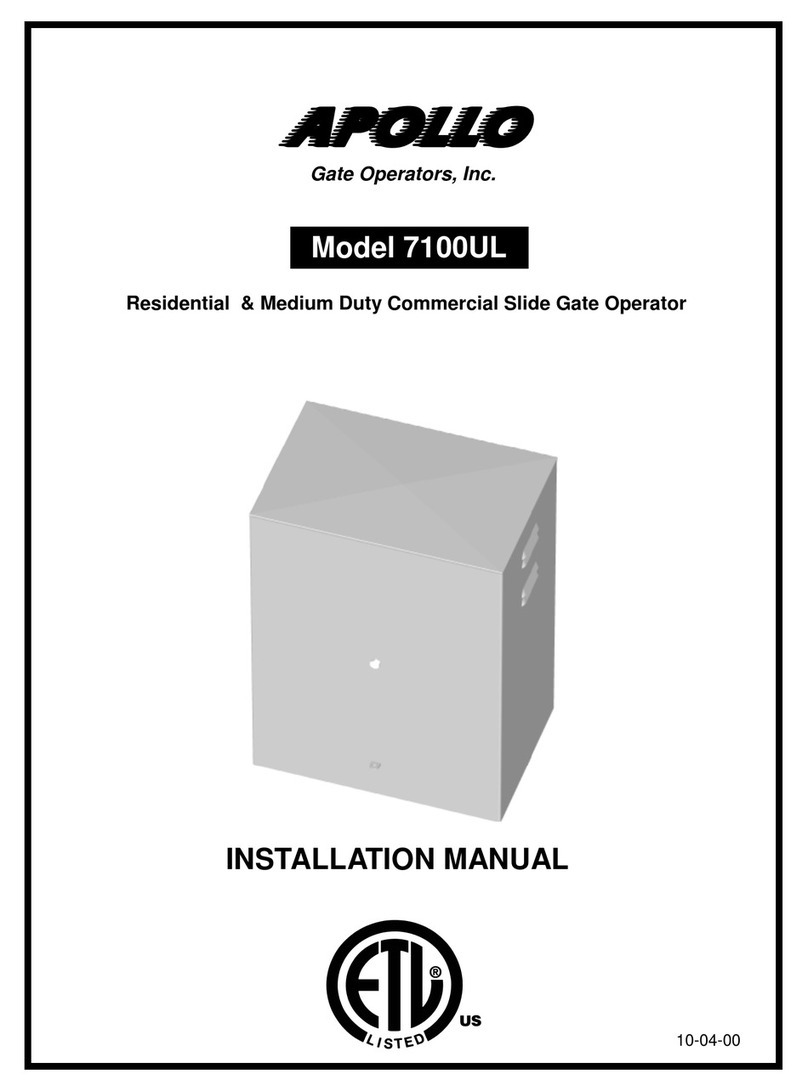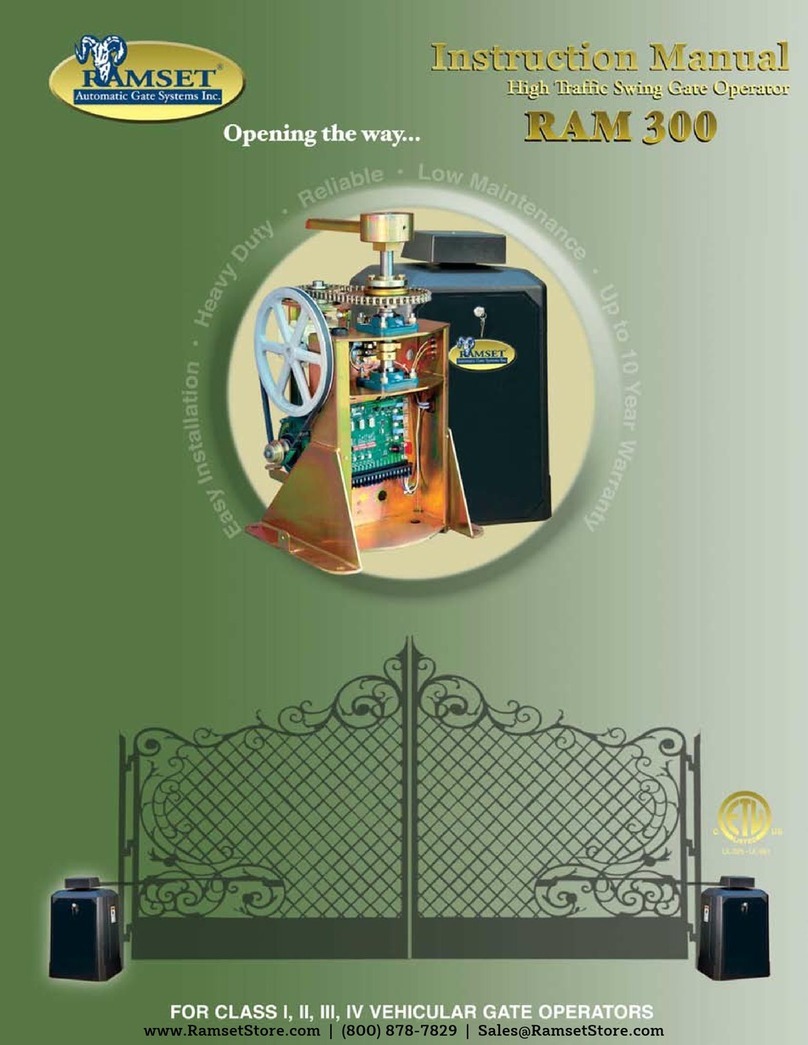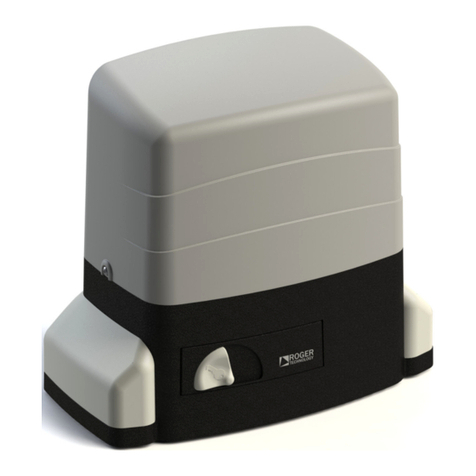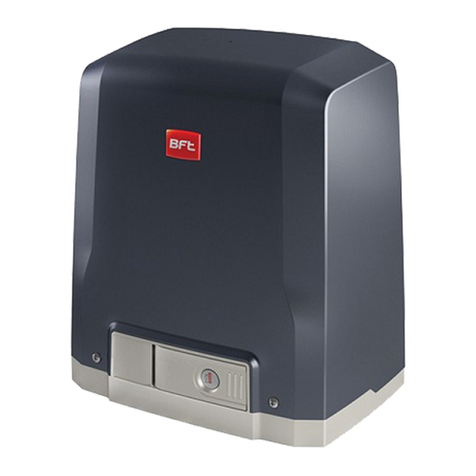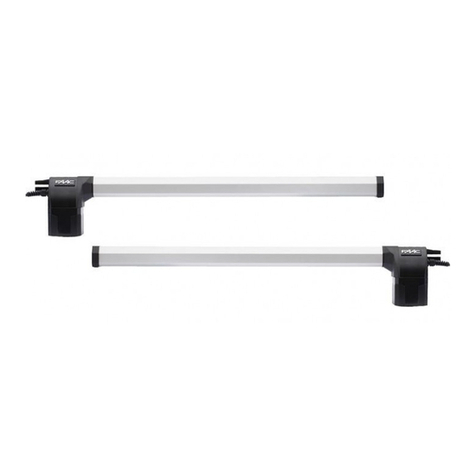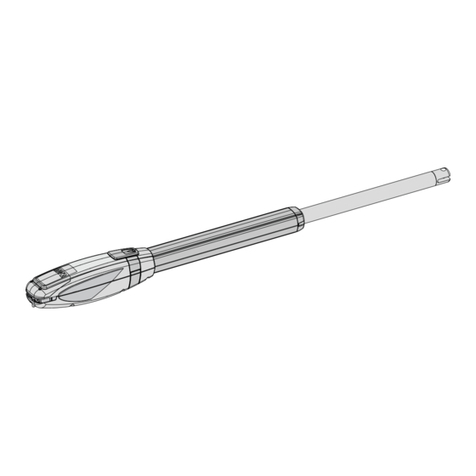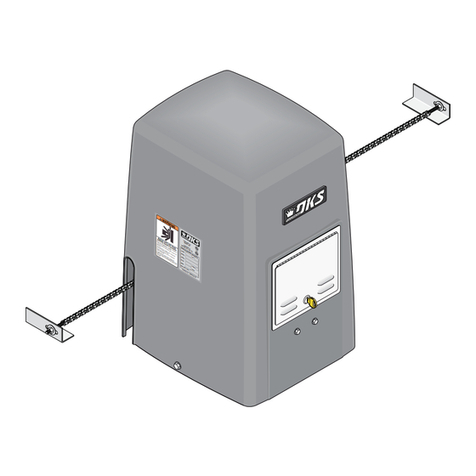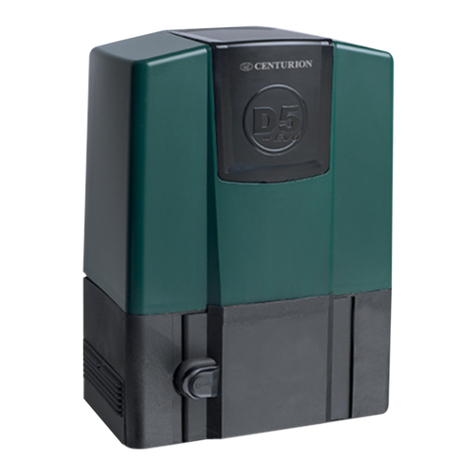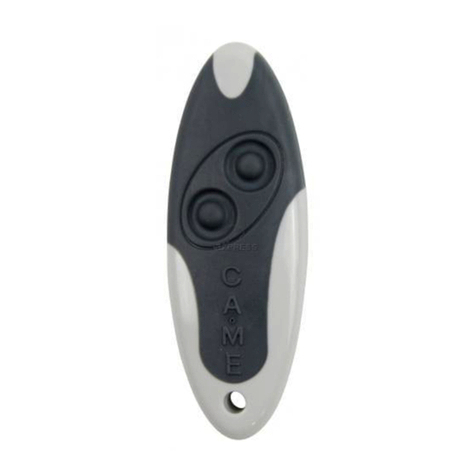LOCKEY TB200 User manual

I
In
ns
st
ta
al
ll
la
at
ti
io
on
n
I
In
ns
st
tr
ru
uc
ct
ti
io
on
ns
s
L
Lo
oc
ck
ke
ey
y®
®
T
TB
B2
20
00
0|
|T
TB
B4
40
00
0|
|T
TB
B6
60
00
0
H
Hy
yd
dr
ra
au
ul
li
ic
c
P
Pe
ed
de
es
st
tr
ri
ia
an
n
G
Ga
at
te
e
C
Cl
lo
os
se
er
r
w
ww
ww
w.
.l
lo
oc
ck
ke
ey
yu
us
sa
a.
.c
co
om
m
Lockey Pedestrian Gate Closers are an economic and reliable
automatic gate closer for use with residential and commercial
gates. Unlike normal closing springs, Lockey Pedestrian Gate
Closers do not slam gates shut. They firmly push gates closed,
making them ideal for use with magnetic locks and other
latching devices. The closing speed is pre-set to provide a
controlled close of approximately 5 seconds, depending upon
the weight of gate, hinge arrangements and quality of hinges
etc. With this closer there is no risk of maladjustment or
tampering with the speed adjustment after the closer is fitted.
Lockey Pedestrian Gate Closers are extremely simple to install.
Each gate closer kit includes mounting brackets, fitting bar and
instructions.
It is advisable to install a mechanical stop to restrict the gate
opening angle and avoid damaging the closer.
Closes large or small gates ranging up to 250 lbs.,
(depending on the model) easily, gently, smoothly
Hydraulic / Nitrogen Gas controlled closing speed
Installs on side, top, middle or bottom of right or left
hand gate
Mounts on opening side of gate, to push gate closed
Maximum opening angle of 110º
Mounting brackets and fitting bar included
T
T
TB
B
B2
2
20
0
00
0
0/
/
/4
4
40
0
00
0
0/
/
/6
6
60
0
00
0
0
L
Lo
oc
ck
ke
ey
y®
®
D
Di
ig
gi
it
ta
al
l
S
Sy
ys
st
te
em
ms
s,
,
I
In
nc
c.
.
•
•
P
PO
O
B
Bo
ox
x
5
54
43
3
•
•
M
Mt
t.
.
P
Pl
le
ea
as
sa
an
nt
t,
,
M
MI
I
4
48
88
80
04
4
T
TE
EC
CH
HN
NI
IC
CA
AL
L
O
OV
VE
ER
RV
VI
IE
EW
W
TB200
TB400
TB600
Maximum Gate Weight:
125 lbs.
175 lbs.
250 lbs.
Maximum Gate Width:
52 inches
64 inches
72 inches
Maximum Opening Angle
110°
110°
110°
Type of Gate Material:
Vinyl, Wood, Steel
Vinyl, Wood, Steel
Vinyl, Wood, Steel
Closing / Latch Speed:
Hydraulic / Nitrogen Gas Controlled
Hydraulic / Nitrogen Gas Controlled
Hydraulic /Nitrogen Gas Controlled
Material:
Steel / Stainless
Steel / Stainless
Steel / Stainless
Color:
Black or Stainless Steel
Black or Stainless Steel
Black or Stainless Steel
Hinge Arrangements:
In-line and Offset
In-line and Offset
In-line and Offset
Opening Pressure:
5 –10# approximately
7-12# approximately
12-16# approximately
Model
Up to
Gate Width
Up to
Gate Weight
TB200
52 inches
125 lbs.
TB400
64 inches
175 lbs.
TB600
72 inches
250 lbs.
Q
QU
UI
IC
CK
K
R
RE
EF
FE
ER
RE
EN
NC
CE
E
F
FE
EA
AT
TU
UR
RE
ES
S

I
In
ns
st
ta
al
ll
la
at
ti
io
on
n
I
In
ns
st
tr
ru
uc
ct
ti
io
on
ns
s
L
Lo
oc
ck
ke
ey
y®
®
T
TB
B2
20
00
0|
|T
TB
B4
40
00
0|
|T
TB
B6
60
00
0
H
Hy
yd
dr
ra
au
ul
li
ic
c
P
Pe
ed
de
es
st
tr
ri
ia
an
n
G
Ga
at
te
e
C
Cl
lo
os
se
er
r
w
ww
ww
w.
.l
lo
oc
ck
ke
ey
yu
us
sa
a.
.c
co
om
m

I
In
ns
st
ta
al
ll
la
at
ti
io
on
n
I
In
ns
st
tr
ru
uc
ct
ti
io
on
ns
s
L
Lo
oc
ck
ke
ey
y®
®
T
TB
B2
20
00
0|
|T
TB
B4
40
00
0|
|T
TB
B6
60
00
0
H
Hy
yd
dr
ra
au
ul
li
ic
c
P
Pe
ed
de
es
st
tr
ri
ia
an
n
G
Ga
at
te
e
C
Cl
lo
os
se
er
r
w
ww
ww
w.
.l
lo
oc
ck
ke
ey
yu
us
sa
a.
.c
co
om
m
Fig #4 Hexagon Headed Securing Pins
Fig #1 Gate Closer Cylinder assembled with retaining bar
DO NOT REMOVE ZIP TIES UNTIL INSTALLED!
Fig #2 Gatepost Bracket
Fig #3 Gate Bracket
Fig #5 Stainless Steel Spacers
Fig #6 Button Head Socket Cap Screws with Plain Washers
Fig #7 Black Fitting Bar
Components in Kit

I
In
ns
st
ta
al
ll
la
at
ti
io
on
n
I
In
ns
st
tr
ru
uc
ct
ti
io
on
ns
s
L
Lo
oc
ck
ke
ey
y®
®
T
TB
B2
20
00
0|
|T
TB
B4
40
00
0|
|T
TB
B6
60
00
0
H
Hy
yd
dr
ra
au
ul
li
ic
c
P
Pe
ed
de
es
st
tr
ri
ia
an
n
G
Ga
at
te
e
C
Cl
lo
os
se
er
r
w
ww
ww
w.
.l
lo
oc
ck
ke
ey
yu
us
sa
a.
.c
co
om
m
NOTE: DO NOT CUT ZIP TIES OR REMOVE THE RETAINING BAR FROM THE CLOSER
Step 1 –Secure (Fig #2) Post Mounting Bracket to the Gatepost
Attach the gatepost bracket to the gatepost with a temporary clamp, following the
dimensions from the appropriate layout on the previous page.
Step 2 –Secure Gate Mounting Bracket to the Gate
Using one of the hexagon headed stainless steel securing pins, (fig #4) attach one end of
the fitting bar (fig #7) to the gatepost mounting bracket (fig #2) using the hole that is
farthest away from the post. Attach the gate bracket (fig #3) to the black fitting bar (fig
#7) using the other hexagon headed stainless steel securing pin, (fig #4) and then swing
the bar and the bracket to the closed gate, check that brackets are horizontally in-line
with each other, and then secure the gate mounting bracket to the gate using a temporary
clamp. Remove the black fitting bar and securing pins from the brackets.
Step 3 –Check Bracket Mounting Positions are Correct
With the gate closed, check the distance between the hole farthest away on the gatepost
bracket (fig #2) and the hole in the gate bracket (fig #3) should be 29 3/8”or less
(measure from the centers of the holes). Open the gate to 90 degrees and check the
distance between the same two holes; it should be 21 7/8”or more. If the dimensions
are correct then screw or weld the post and gate brackets in place.
Step 4 –Grease the Components
Grease Securing Shaft (Fig 4)
Grease Inside Stainless Steel Spacer (Fig 5)
Grease Spacer Shoulder (Fig 5)

NOTE: DO NOT CUT ZIP TIES OR REMOVE THE RETAINING BAR FROM THE CLOSER
Step 5 –Fit the Gate Closer to the Mounting Brackets
Place the stainless steel spacers (fig 5) into the gate closer cylinder end fittings.
Following the dimensions from the appropriate installation drawings, place the smaller
diameter end of the gate closer into the appropriate hole in the gatepost bracket using
one of the hexagon headed stainless steel securing pins (fig 4). Place the larger diameter
end of the gate closer into the gate bracket (fig 3) using the other hexagon headed
stainless steel securing pin (fig 4), the gate will need to be partially opened to do this.
Cut the zip ties from the gate closer. Open the gate further and then remove the steel
retaining bar from the gate closer cylinder. Release the gate and it will close
automatically.
Step 6 –Final Set-up and Testing Function
Set the gate’s mechanical stop to the correct position. To do this, open the gate to a
position where the distance between the center of the hexagon headed mounting pins are
22 inches or more apart. Set the gate’s mechanical stop to restrict the opening at this
point. Open the gate and allow the closer to close the gate a few times to check the
function.
Step 7 –Check mounting bolts
Check that all mounting bolts and screws are secure. Secure and tighten hexagon headed
securing pins on the underside of the bracket by tightening the hexagon headed (Allen)
stainless steel securing screw and plain washer (use suitable thread locking liquid if
required). Finally, remove plastic cover from the gate closer cylinder. The gate closer is
now ready for use.
Step 8 –Grease end fittings
Coat the end fittings with a layer of grease.
Maintenance
Carry out regular inspections of the gate closer and fittings, checking that fixings are
secure and the closer is functioning correctly. Lubricate closer parts when necessary, as
indicated in fitting instructions. Remove gate closer cylinder immediately if it
malfunctions or there is any damage to the closer or end fittings.
Troubleshooting & Tips
If the gate closer is not strong enough, or closes to fast, you need to move the cylinder 1
hole (notch) away from the post, on the gatepost bracket (fig 2). Repeat if necessary.
Do the opposite if it is too strong.
The cylinder pushes the gate closed and the speed of cylinder travel is about 1” per
second. The speed of the cylinder will not change very much by moving the gate closer
further away from the post. But the closer will become stronger. 5” to 6” of cylinder
compression is optimal at 90 degree open.
When you have a corner hinge or offset hinge arrangements, the multi-hole bracket
allows for more options to achieve the best closer strength by moving the closer nearer
or further away from the post. It’s often a problem because the hinge off set from the
post will vary from gate to gate. With an in-line hinge setup it is often necessary to
move the closer away from the post because more strength is required from the gate
closer, particularly when the gate is heavier than initially thought.
This manual suits for next models
2
Other LOCKEY Gate Opener manuals
